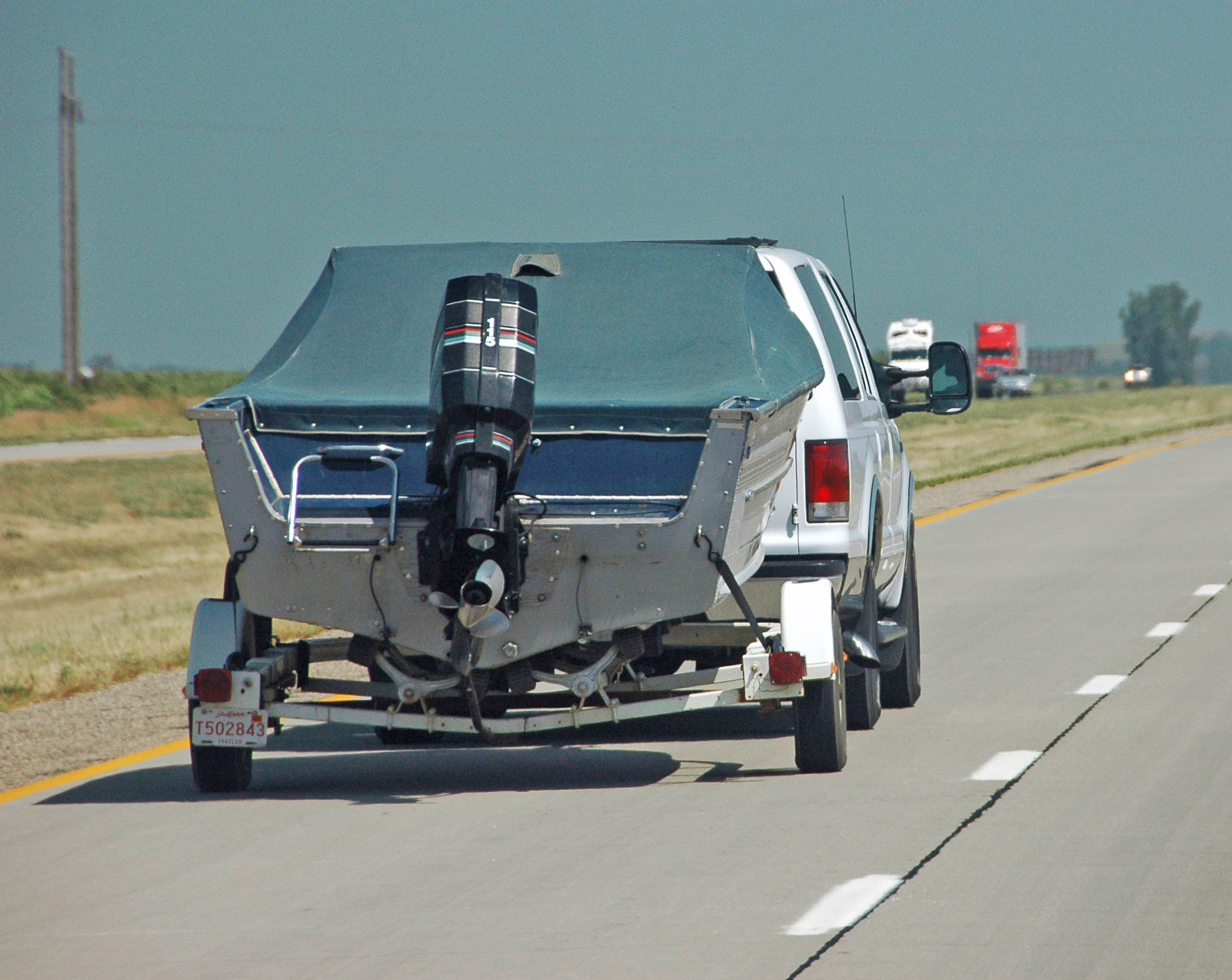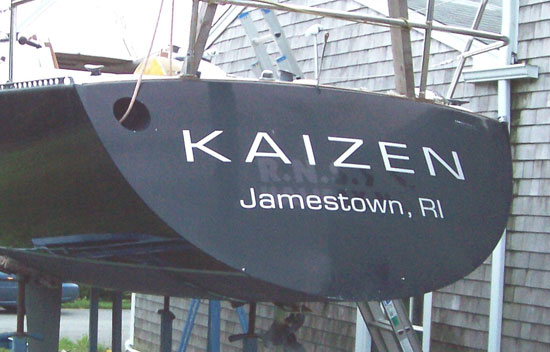Buying a Used Boat Trailer
Find out what to look for when scoping out the used boat trailer market.
Buying a trailerable boat has many benefits, including significant cost-savings made from mooring and storage fees. Another benefit is the flexibility you have over the location, with a trailerable boat you can launch it anywhere with a slipway or crane. As a general rule of thumb, trailerable boats tend to measure no larger than twenty feet. Any boat over above approximately 22' or 7700 lbs becomes challenging to maneuver without having an extra pair of hands to help get the boat on or off the trailer.
As any boat owner will tell you, boats require a considerable amount of maintenance and if your boat is trailerable, you have the luxury of carrying out work conveniently on, or close to home. Lastly, you can tow your boat to explore new locations in a fraction of the time it would take to get there by boat.
Buying a trailer that is ill-suited to the boat, could seriously damage the vessel and also cause a road accident. Boat trailers are often an afterthought and when budgets are tight, the suitability can be overlooked. Inexpensive trailers that sit at the low end of the market tend not to have a good range of adjustments.
New trailers cost a small percentage of the value of the boat and if you want to retain a decent resale value, ensure you buy a trailer with a modern design and a proper maker’s specification plate with a guide to its rated carrying capacity.
Boats fit into two main categories, each require different types of trailers:
Motor boats: Roller trailers have small wheels on the trailer's framework. Roller trailers are good for shallow water and are ideal for fishing boats, day cruisers, and semi-rigid boats.
Sailboats: Use a trailer with cradles and carrying rollers under the keel to support the boat. A sailboat that can be towed by a car using a boat trailer is referred to as a trailer sailer.
Trailers wider than 8 ft 6 in are considered "wide loads" and may be subject to regulation that could include special permits, flags or banners, and restrictions on when the trailer can be on the road. Check the rules of the states that you are intending to drive through to make sure that you are complying with local laws.
Above: Some boats come with trailers included in a package deal. The Tracker Pro Guide is attractive example. The low-cost package includes a boat, motor, and trailer.
Principles of Boat Trailer Design
Attention should be given to the ability of an object to resist twisting when an external force, or when torque, is applied to the chassis frame, the position of the axle and winch post in relation to the weight distribution of the boat along the length of the hull evenly.
Scouring the Used Trailer Marketplace
Certain vessels are easier to shop for than others, for example, a fin-keeled yacht will take up a smaller space on the trailer marketplace and you might need to travel a bit further to find one that is suitable. But it is worth putting in the hard graft to find one that is the most suited to your yacht. that needs a particularly carefully designed trailer to ensure its safety when on the road. A maker’s plate displays the place of origin of the trailer and its capacity. The absence of one means the trailer was either built by an amateur or is likely to be ancient.
Take It For A Test Tow
If the seller permits you to take the trailer for a test drive, take the trailer out for a test tow to see how it handles and check for any issues. Check that the braking system is working effectively. Modern brakes will automatically release while reversing.

Above: trailering a boat with a cover on it requires careful planning and making sure the boat cover is secure before you hit the road.
Ensure The Nose Weight Is Just Right
How the boat will sit on the trailer and the weight distribution once the boat is positioned will affect the nose weight bearing down onto the tow ball of the towing vehicle.
The sweet spot for an appropriate nose weight varies depending on what type of vehicle you are using. Check with the manufacturer and find out the correct weight specific to your vehicle.
Snaking between the trailer and tow vehicle can occur when the nose weight is too high, causing the front wheels of the towing vehicle to have less contact with the road, or when the nose weight is too low, the vehicle’s rear wheels will lose grip.
Supporting the Boat
Some hull shapes such as round-bilge will not work effectively with ‘rollercoasters’ ( rows of wheels) and can be loaded up safely using keel rollers and chine supports’ and spreads the load over a wide proportion of the hull.
Weighing A Used Boat Trailer
One key consideration regarding a vessel's recommended displacement weight is that it will be far heavier than the manufacturer’s quoted displacement if it is towed with equipment on board in cruising trim. In an ideal scenario, you should check the gross weight of the boat before a trailer is purchased, although in many instances this is a challenge. At your nearest opportunity, you should take the boat and trailer to a local weighing station. The weight of the trailer, as recommended on the maker’s plate can be subtracted.
It is always best to avoid taking risks when considering the gross weight of the boat and the capability of the trailer required.
Once you have found a trailer that can support the boat’s weight, you must examine it for the many standout and less visible faults that can be found in used boat trailers. Here is a comprehensive list that you can use when inspecting the trailer for faults.
Wheels and Tyres: Scope Out For Signs of Misuse
Look out for signs of corrosion and check the condition of the wheel bearings.
Check that all the wheel studs are there and have not been broken off. Broken wheel studs indicate possible misuse and a lack of care and maintenance. If you chose to take the boat trailer home regardless, any broken studs will need replacing immediately. A common reason that trailers break down along the side of the road is because the bearings are worn due to dirt and water entry. If this happens, for safety’s purposes, renew the bearings and fit new covers. Bearing covers should fit properly in position and all studs and nuts should be fitted tightly and be clean.
Similarly, if you notice that the bearing housing covers are missing, it is likely to mean that the wheel bearings are overworn. Spin each wheel and listen to see if the bearings make any noise. Any grating noise that sounds from the bearings indicates that the rollers or balls in the bearings are breaking. There should be a slight movement in each direction that demonstrates the bearings are properly adjusted, with enough free play to prevent overheating.
Check the condition of the tyres. Lookout for cracks and make sure there are no signs of damage.
Steel-belted radial tyres of the correct rating, allow for higher inflation pressures, more load carrying capacity, lower rolling resistance, higher speeds, and casing durability.
It’s important to carry out regular maintenance on the wheel bearings yourself, and if you are not confident in your abilities, consult the services of a qualified professional.
Be Mindful of Weld Failure
Single-run channel sections have little torsional strength and allow the trailer to bend quite dramatically once loaded. This puts stress on the welded joints and could lead to weld failure.
Box sections offer the greatest stiffness and prevent twisting, while double or triple run sections prevent flexing lengthways.
Winches and Rollers
The most secure trailers will have a rigidly mounted winch stay that supports the bow of the boat and enables it to be secured tight against the stay. A modern winch is easy to operate and runs smoothly.
Winches that are not oiled will rust and often result in early failure. Winch cables that are frayed and rusty are likely to cause issues. The base of a winch that shows signs of corrosion and will need
removed and treated before painting and refitting.
Used Boat Trailer Lighting
Ensure that all lights are functional including brake lights, turn signals and tail lights. Look for corroded connections. You should carry spare bulbs around with you in case your bulbs run flat mid-journey.
Paperwork
Make sure that the trailer has a clear title and any associated registration paperwork. Verify that the VIN (Vehicle Identification Number) matches the title.
Are you in the market for a trailerable boat? Check out used and new boats for sale on boats.com












